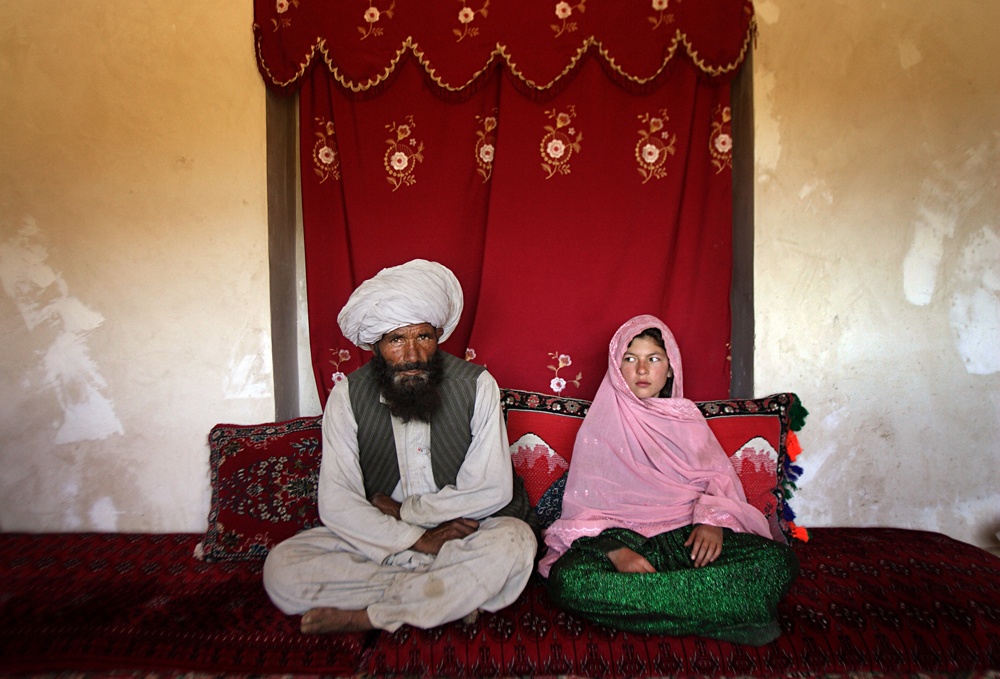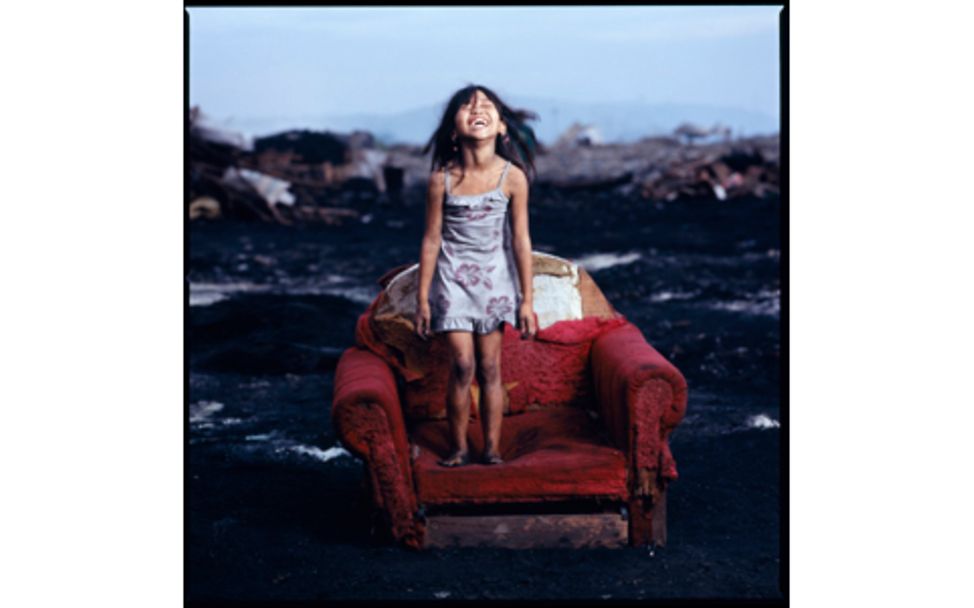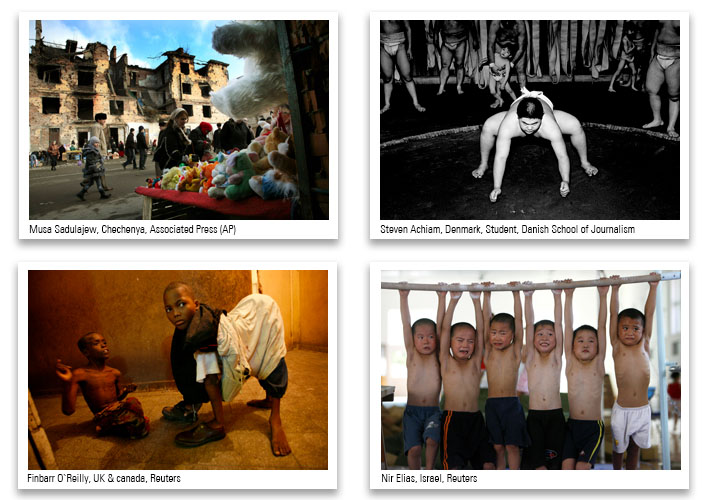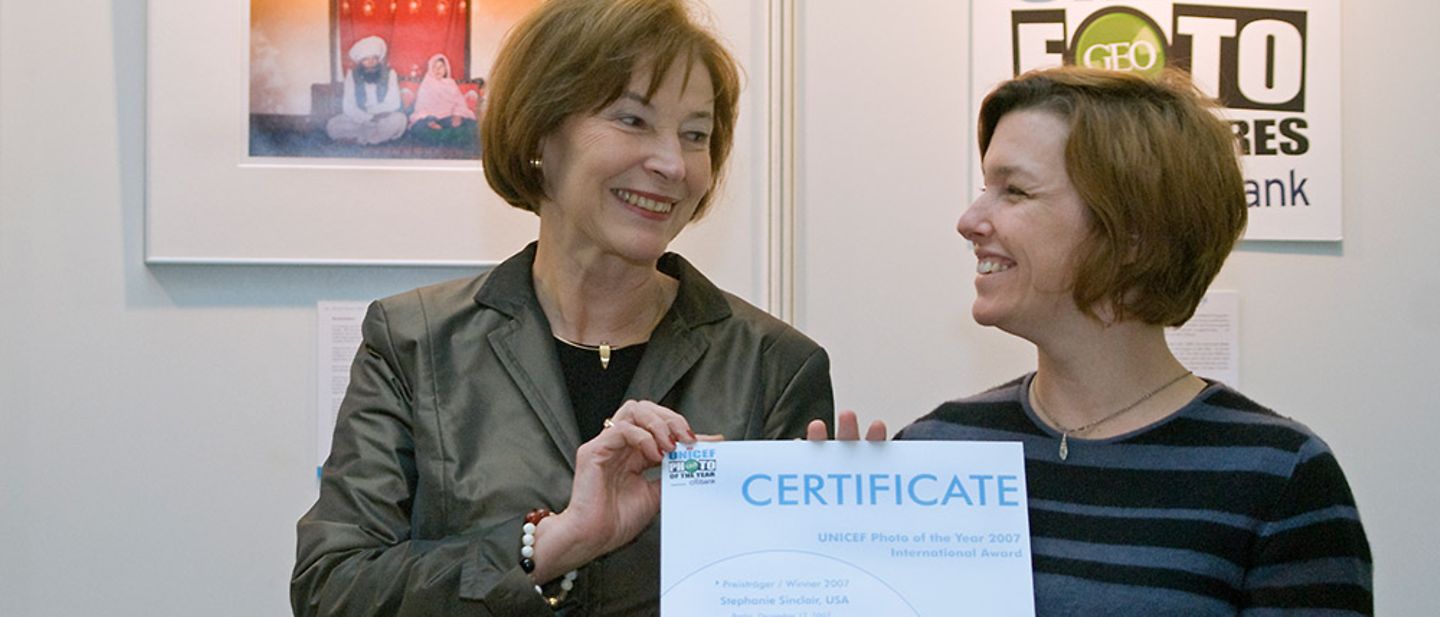UNICEF Photo of the Year 2007
Each year, UNICEF Germany grants the “UNICEF Photo of the Year Award” to photos and photo series that best depict the personality and living conditions of children worldwide in an outstanding manner. Here are the winners 2007.
Stephanie Sinclair
Child brides

He’s forty, she’s eleven. And they are a couple – the Afghan man Mohammed F.* and the child Ghulam H.*. “We needed the money”, Ghulam’s parents said. Faiz claims he is going to send her to school. But the women of Damarda village in Afghanistan’s Ghor province know better: “Our men don’t want educated women.” They predict that Ghulam will be married within a few weeks after her engagement in 2006, so as to bear children for Faiz.
During her stay in Afghanistan, it consistently struck American photographer Stephanie Sinclair how many young girls are married to much older men. She decided to raise awareness about this topic with her pictures. Particularly as the official minimum age for brides in Afghanistan is sixteen and it is therefore illegal to marry children.
Early marriages are not only a problem in Afghanistan: worldwide there are about 51 million girls aged between 15 and 19 years who are forced into marriage. The youngest brides live in the Indian state of Rajasthan, where 15% of all wives are not even 10 years old when they are married. Child marriages are a reaction to extreme poverty and mainly take place in Asian and African regions where poor families see their daughters as a burden and as second-class citizens. Already in their younger years, girls are given into the “care” of a husband, a tradition that often leads to exploitation. Many girls become victims of domestic violence. In an Egyptian survey, about one-third of the interviewed child brides stated that they were beaten by their husbands. The young brides are under pressure to prove their fertility as soon as possible. But the risk for girls between the ages of 10 and 14 not to survive pregnancy is five times higher than for adult women. Every year, about 150,000 pregnant teenagers die due to complications – in particular due to a lack of medical care, let alone sex education.
For her project, Stephanie Sinclair also traveled to Nepal and Ethiopia. She wants to do research on the topic of child marriage in other regions as well and then publish a book on the issue.
2nd Prize for G M B Akash, "Child Labor in Bangladesh"

According to UNICEF estimates, about 3.3 million children in Bangladesh are involved in child labor – almost 20% of the working population, despite efforts during the 1990s to ban child labor in the textile industry. Many children are forced to carry out hazardous work with dangerous chemicals in paint shops, workshops and tanneries. A child worker receives 60 Taka per day (less than 1 Dollar), about one-third of the regular wage for adults. Factory owners prefer to employ children, thereby keeping trade unions out of their factories. By entering the labor market at such an early age, children have no chance of getting an education and consequently no chance of getting better-paid jobs.
The photographer G.M.B. Akash grew up in Bangladesh and has been working as a professional photographer since 2002. He first and foremost watches people on the margins of his country’s society. With his camera, he tries to document their right to exist, hoping that his pictures give them dignity and raise awareness for their difficult situation.
3rd Prize for Hartmut Schwarzbach, "Smokey Mountain – Children of a charcoal burners’ camp in Manila"

On her ninth birthday, Annalyn S.* was photographed by German photographer Hartmut Schwarzbach, happily jumping on a red sofa that she had found on the garbage dump near the city of Manila (Philippines). It has been three years now that Annalyn and her family have lived beside Manila’s enormous garbage dump called “Aroma Smokey Mountain”. That’s where her family lives in a charcoal burners’ camp.
Like most other children in this camp, Annalyn has to search for wood among the garbage every day, bring it to an oven and monitor the charcoal production amidst acrid smoke and unbearable heat. Together with her siblings and parents, she has to bring thousands of liters of water to extinguish the fire and collect the finished charcoal. The family has to hand over most of their yield to the local mafia.
Like almost all children here, Annalyn is malnourished and thus much too skinny and small for her age. She looks like a five-year-old. Many of the children can neither read nor write and do not attend any school. One day, Annalyn wants to be a teacher.
Honorable Mentions


